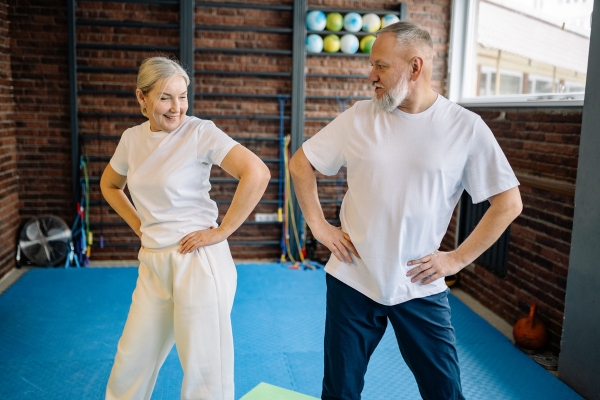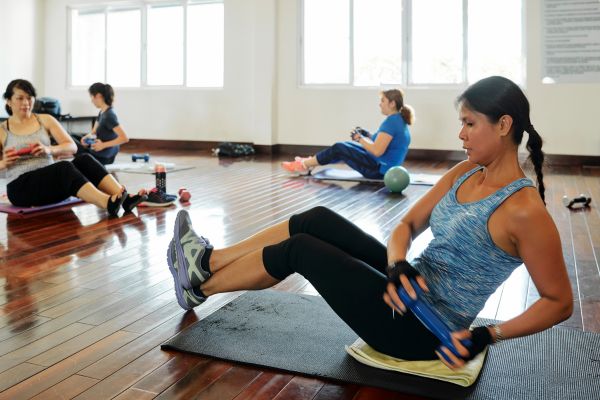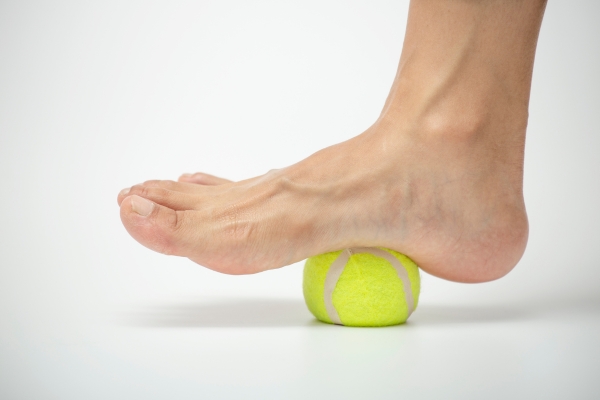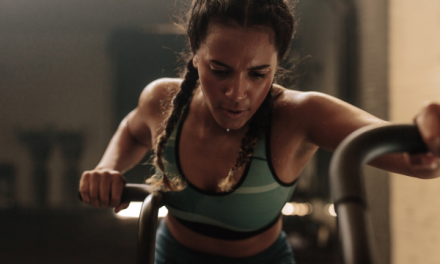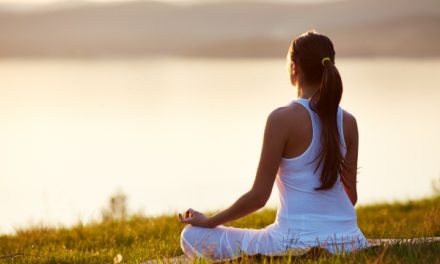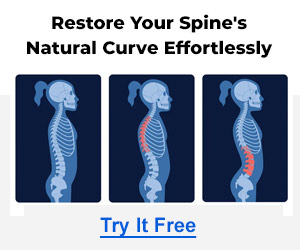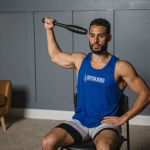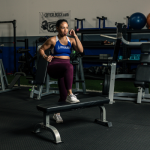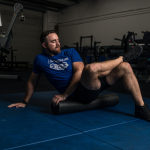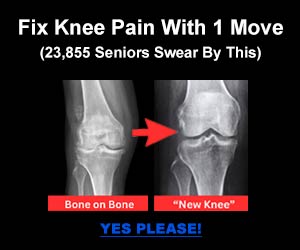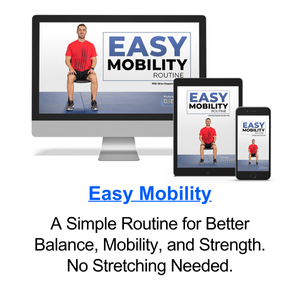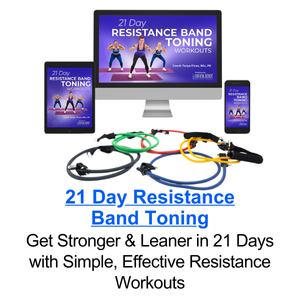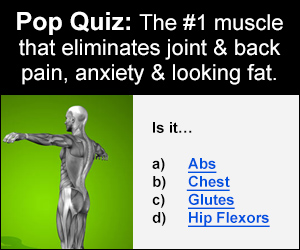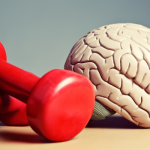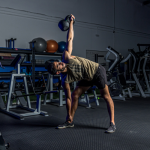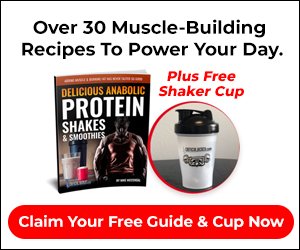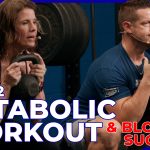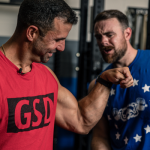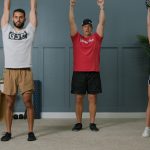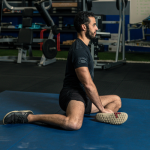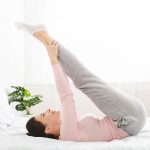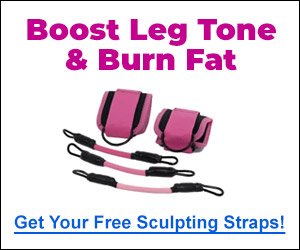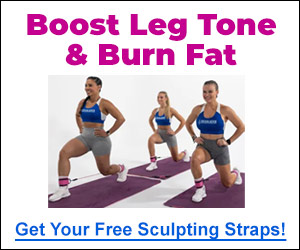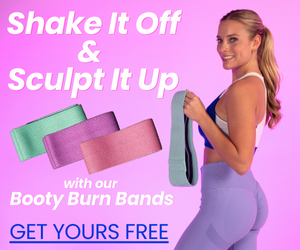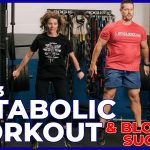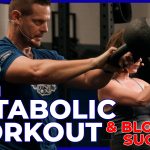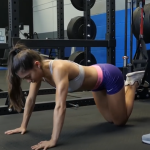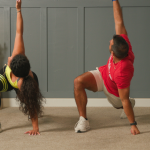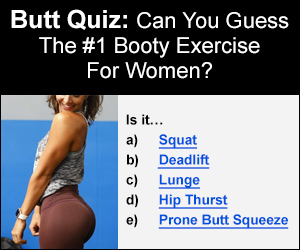If you think getting fit over 40 means slowing down and focusing only on “safe” cardio routines, you’re setting yourself up for failure.
The truth is, after 40, your body is more at risk of breaking down—not because of age, but because of how you’ve been misled about what fitness over 40 means.
The common advice to avoid lifting weights and stick to endless hours of cardio is outdated and downright dangerous.
Muscle loss, joint issues, and decreased flexibility are not inevitable if you approach fitness the right way.
In fact, maintaining—and even building—strength, mobility, and overall health becomes more critical as you age.
Let’s dive into the best tips for creating a strategic fitness routine after 40 – your key to aging strong, vibrant, and injury-free.
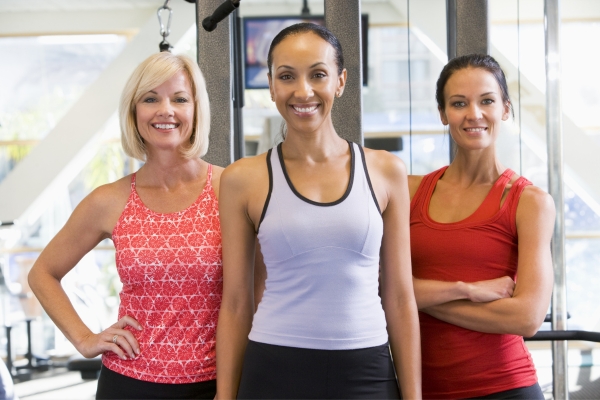
The Foundation: Proper Warm-Ups for Muscle and Joint Health
Skipping your warm-up as you age is like playing with fire.
As your body changes after 40, it’s even more vulnerable to injury, and jumping straight into your workout is a fast track to pain and setbacks.
A thorough warm-up does more than just get the blood flowing; it preps your muscles, lubricates your joints, and enhances performance so you can push harder and stay injury-free.
Dynamic Stretches vs. Static Stretches: Which is Right?
The old-school approach of holding static stretches before a workout is not only ineffective—it could be harmful.
For aging muscles and joints, dynamic stretches are your go-to.
These involve controlled movements that mimic the exercises in your workout, gradually increasing your range of motion and warming up the body.
Save static stretches for post-workout when your muscles are already warm.
Warm-Up Routines for Aging Muscles and Joints
Start with 5-10 minutes of low-impact cardio to increase circulation.
Then, incorporate dynamic stretches like leg swings, arm circles, hip rotations, and torso twists.
For added joint health, include mobility exercises like ankle rolls and wrist rotations.
These exercises ensure your muscles and joints are primed for action, reducing the risk of strains or sprains while maximizing your performance in the workout ahead.
Sample Dynamic Stretching Routine
Here’s a sample routine that you can incorporate into your next workout.
Perform 10 to 15 repetitions on each side of the body for each of the following exercises:
Leg Swings
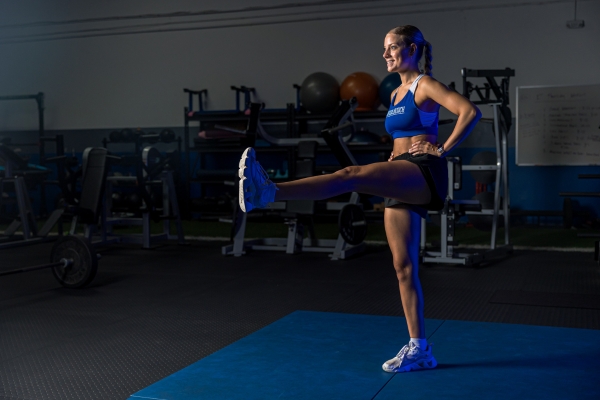
How to Do It: Stand tall, brace yourself against a wall, and swing your leg like a pendulum—front to back or side to side—unlocking hip mobility and firing up your muscles for the work ahead.
Arm Circles
How to Do It: Stretch your arms out straight like a human airplane, and draw controlled circles, starting small and gradually expanding, lubricating your shoulder joints and prepping them for battle.
Hip Rotations
How to Do It: Plant your feet shoulder-width apart and rotate your hips in big, smooth circles like you’re stirring a pot with your waist, loosening up those hip flexors and priming your core for action.
Torso Twists
How to Do It: Stand tall, clasp your hands in front of you, and twist side-to-side like you’re wringing out a wet towel, engaging your core and freeing up spinal movement for optimal rotation.
Ankle Rolls
How to Do It: Stand on one leg and rotate your ankle in controlled circles, both directions, to wake up your stabilizers and get those ankles ready to handle the pressure of every step, jump, and landing.
Wrist Rotations
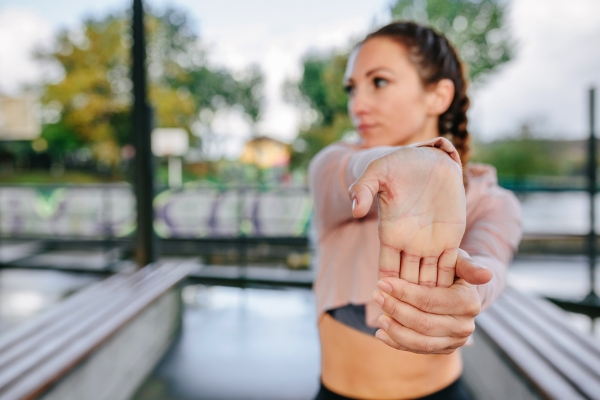
How to Do It: Extend your arms and rotate your wrists in smooth circles, forward and backward, ensuring your grip stays strong and joints stay loose for everything from heavy lifting to bodyweight control.
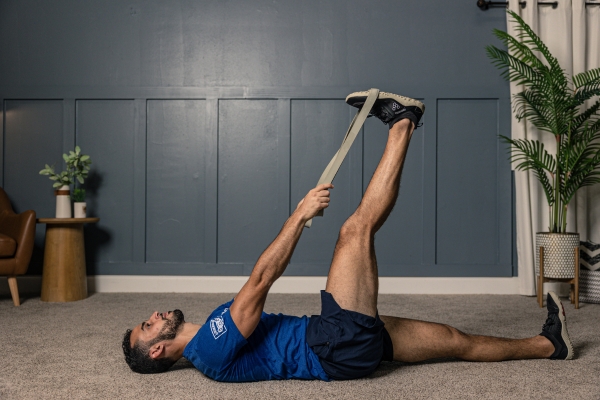
Focus on Mobility and Range of Motion
Mobility is often the most overlooked component of fitness—until you hit 40 and suddenly feel stiff, restricted, or prone to injuries.
The truth is, as we age, maintaining mobility and range of motion (ROM) becomes critical.
Without it, even simple daily activities can become a challenge, leading to a downward spiral of inactivity, weakness, and joint pain.
Why Mobility Matters More Than Ever After 40
Aging leads to natural declines in flexibility and joint health, but these aren’t inevitable if you take care of your body.
Loss of mobility doesn’t just limit your ability to perform exercises effectively; it impacts everything from walking and bending to lifting and twisting.
The good news?
Investing time into mobility work can keep your joints supple, your muscles flexible, and your movement fluid—essential components for aging strong and staying injury-free.
How to Improve and Maintain Range of Motion
To combat stiffness and maintain flexibility, it’s vital to incorporate specific stretches and mobility drills into your routine.
Focus on dynamic stretches before workouts and targeted mobility drills on rest days.
Key areas to target include the hips, shoulders, and spine, as these joints tend to tighten most with age.
Sample Mobility and ROM Routine:
Here’s a sample workout that focuses on mobility and improving range of motion:
Hip Flexor Stretch

How to Do It: Drop into a lunge, push your hips forward, and feel the stretch deep in your hip flexors like you’re unlocking the door to better posture and explosive lower-body power.
Spinal Twists
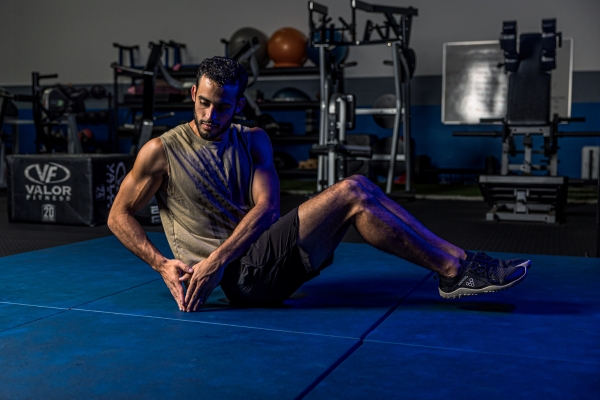
How to Do It: Lie on your back, cross one leg over the other, and twist your torso, letting gravity pull you deeper into the stretch as you realign your spine and release the tension that’s been holding you back.
Shoulder Circles
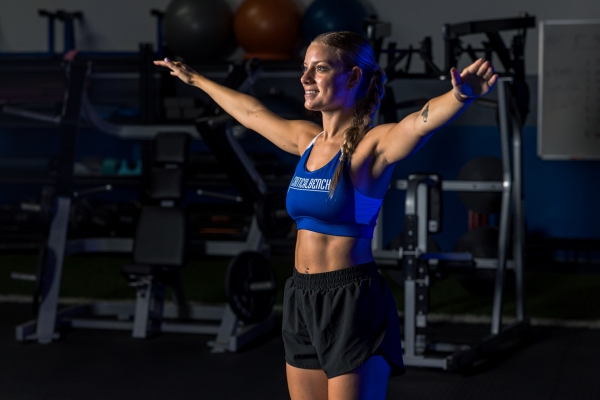
How to Do It: Stand tall and move your shoulders in big, deliberate circles, both forward and backward, as if you’re oiling the gears for a smooth, pain-free range of motion.
Cat-Cow Stretch
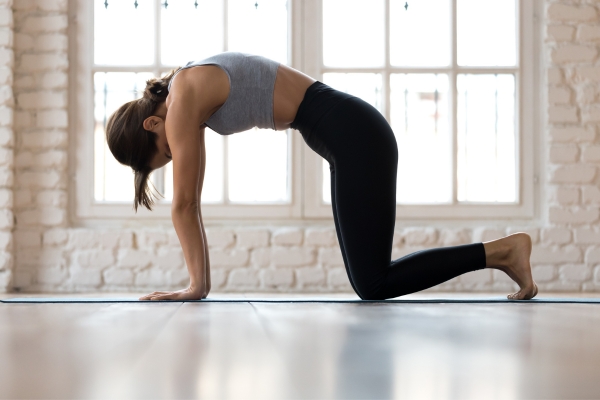
How to Do It:On all fours, arch your back up like an angry cat, then drop your belly and lift your head like a curious cow, flowing through the movements to wake up your spine and tune up your core.
Deep Squat Hold

How to Do It: Sink down into a deep squat, chest up and heels flat, and hold it there, embracing the burn as you build bulletproof mobility and strength from the ground up.
The Benefits of Dedicating Time to Joint Health and Flexibility
Committing to mobility and ROM work pays off big time.
Improved flexibility leads to better posture, reduced joint pain, and enhanced athletic performance.
Plus, you’ll move with greater ease and confidence in everyday life.
By prioritizing mobility as part of your routine, you’re ensuring that age doesn’t limit your movement—it enhances it.
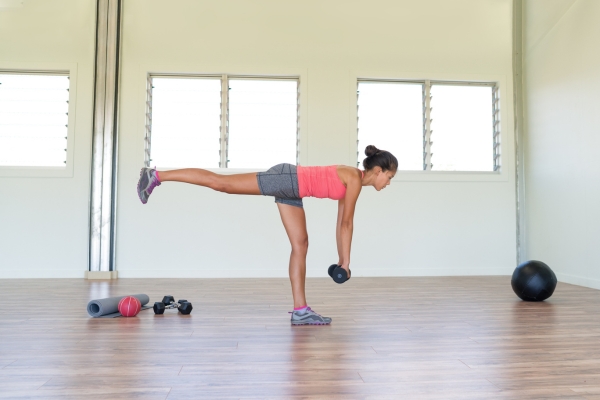
Balance Exercises: Your Secret Weapon for Longevity and Stability
As you get older, maintaining balance becomes important for your overall health and mobility.
Balance is one of the first things to slip as we age, leading to increased risks of falls and related injuries.
But here’s the good news: with the right exercises, balance can be trained, sharpened, and even restored.
Incorporating targeted balance routines into your fitness plan not only keeps you steady on your feet but also sets the foundation for healthy aging.
Why Balance Matters for Injury Prevention and Independence
Balance is about more than staying upright; it’s your body’s way of managing coordination and control during every movement.
Whether you’re bending down to pick something up or stepping off a curb, good balance helps you move smoothly and confidently.
As you age, reduced balance can make you more vulnerable to slips, falls, and serious injuries like fractures.
By prioritizing balance training, you’re actively investing in long-term independence and reducing your risk of accidents.
Simple and Effective Balance Exercises for Daily Practice
You don’t need fancy equipment to work on your balance.
In fact, some of the most effective exercises are simple and can be done almost anywhere.
Here are a few you can easily add to your routine:
Single-Leg Balance
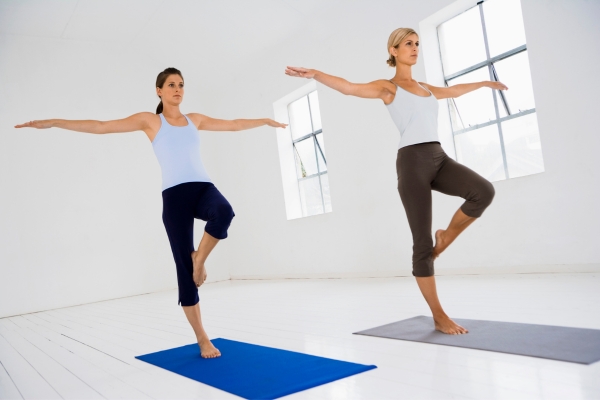
How to Do It: Stand on one leg for 30 seconds, then switch sides. For an extra challenge, close your eyes or extend your arms out to increase instability.
Tandem Walk (Heel-to-Toe Walk)
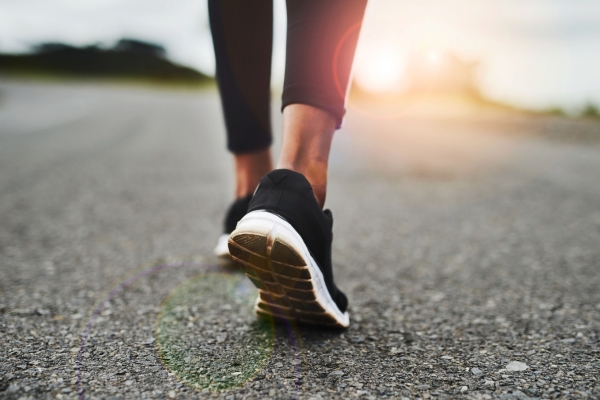
How to Do It: Walk in a straight line like you’re on a tightrope. Your heel should kiss the toes of the opposite foot with each step—no gaps. Do this for 10-15 steps. Why? It’s not just about balance; it’s about training your body to move with precision and control, so you’re ready for anything life throws your way.
Stability Ball Work
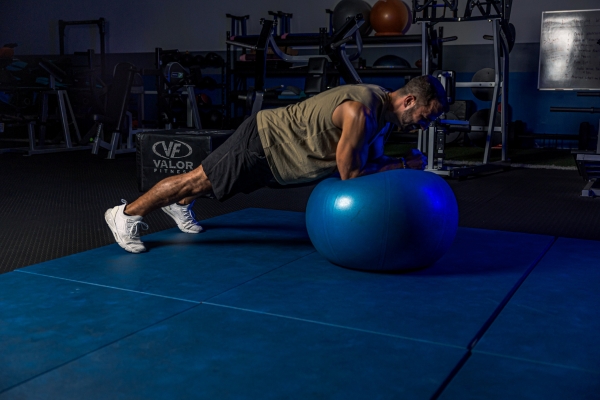
How to Do It: Use a stability ball for seated marches or gentle pelvic tilts. These movements engage your core while challenging your balance.
Yoga’s Powerful Role in Improving Balance and Overall Well-Being
Incorporating yoga into your routine is suggested for better balance.
Poses like Tree Pose, Warrior III, and Half-Moon target your stabilizing muscles, helping you enhance both coordination and flexibility.
Beyond the physical benefits, yoga also nurtures mental clarity and reduces stress through controlled breathing and mindfulness, which are key for maintaining a balanced life as you age.
By committing to balance exercises and incorporating practices like yoga, you’ll see improvements in stability, flexibility, and confidence in your day-to-day movements.
The key to aging gracefully is staying balanced—both physically and mentally—so you can continue enjoying an active and independent lifestyle.
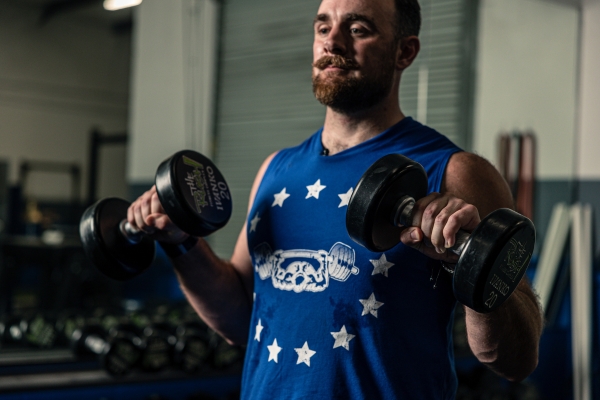
Strength Training: Why It’s Essential as We Age
There’s a persistent myth out there that once you hit a certain age, you should trade in your weights for endless hours on the treadmill.
But here’s the reality: while cardio has its place, it’s strength training that truly makes the difference in how you age.
Strength training isn’t just for bodybuilders or gym junkies; it’s the key to maintaining a strong, healthy, and functional body as you get older.
Why Strength Training is a Non-Negotiable After 40
As we age, our bodies naturally start to lose muscle mass, bone density, and metabolic efficiency.
But this decline isn’t set in stone—it’s preventable.
Regular strength training fights against muscle loss, keeps your bones strong, and even helps you burn more calories at rest by boosting your metabolism.
Think of strength training as your ticket to staying fit, independent, and resilient well into your later years.
Getting Started: How to Build a Strength Training Routine That Works
If you’re new to strength training or haven’t done it in a while, start with the basics.
Focus on compound exercises that target multiple muscle groups, like squats, deadlifts, and push-ups.
Incorporate bodyweight exercises and resistance band workouts as well—they’re joint-friendly and versatile for at-home training.
Aim for 2-4 sessions per week, gradually increasing weight and intensity as you get stronger. The goal is consistency and progression, not perfection.
What to Include in Your Routine
Start with learning and mastering the fundamentals: bodyweight exercises.
Here are some of the most important bodyweight movements to do in your workout program.
Bodyweight Squats
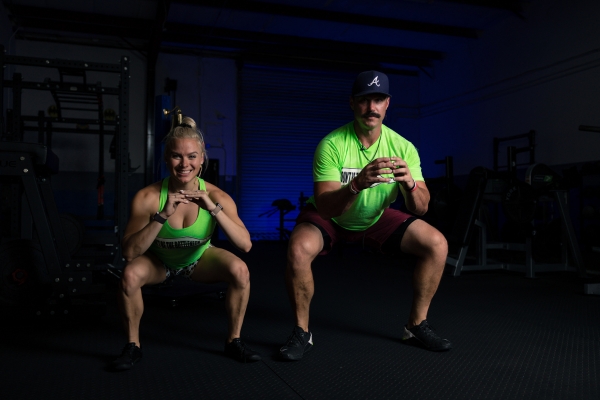
How to Do It: Drop your hips back like you’re sitting into an invisible chair, keep your chest up, and drive through your heels to explode back up—don’t let your knees cave in!
Lunges
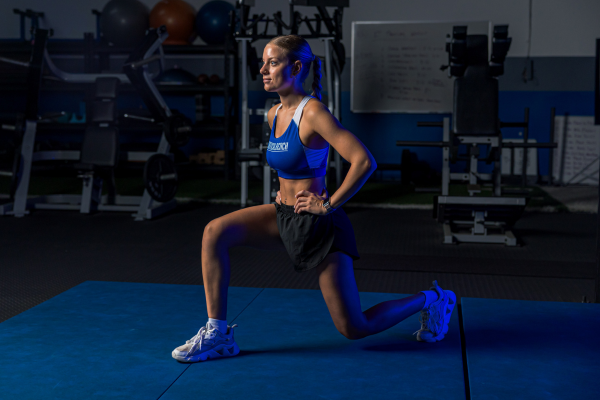
How to Do It: Step forward with one leg, drop your back knee toward the floor, and push off the front foot to return—think of it as a controlled fall that builds strength and stability.
Push-Ups
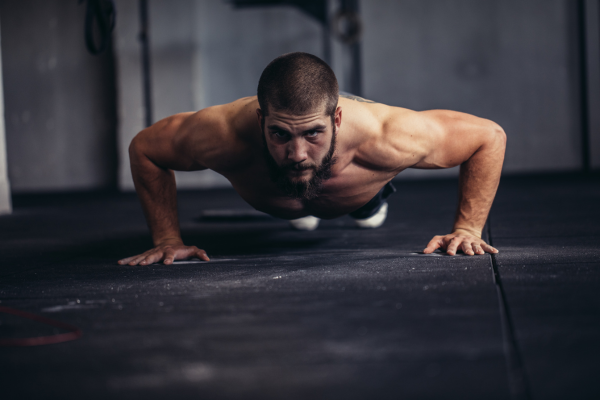
How to Do It: Lower your chest like you’re moving in one piece from head to heel, then drive the floor away from you—lock in that core to stay rock-solid through the movement.
Pull-Ups
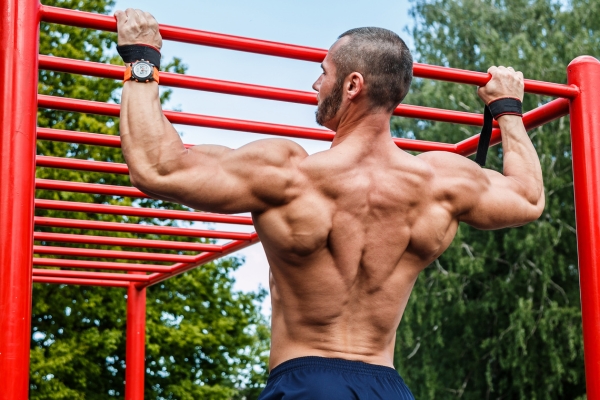
How to Do It: Grip the bar, pull your chest to it by engaging your lats like you’re squeezing two oranges under your arms, and control the descent to avoid swinging.
Planks
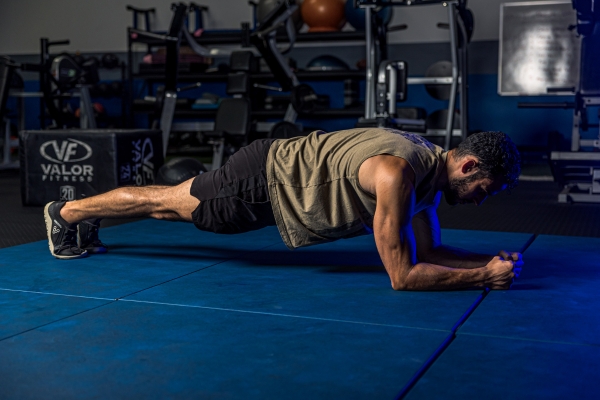
How to Do It: Brace like you’re about to get punched in the gut—your body should be a straight line from head to heel, with zero sagging or arching.
After you’ve become comfortable with these exercises, it’s time to take it to the next level with compound exercises.
These are the backbone of any strength routine. They work multiple muscles at once, giving you the most bang for your buck.
Squats

How to Do It: Rack the barbell across your traps, set your feet shoulder-width apart, and squat down like you’re sitting in a chair, driving through your heels and keeping your chest up—because a strong foundation starts from the ground up.
Deadlifts
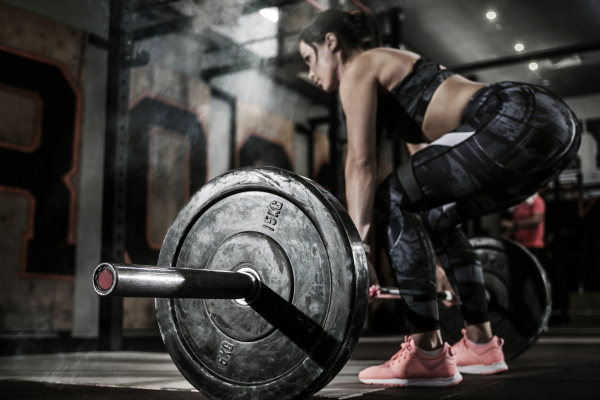
How to Do It: Hinge at the hips, grip the bar just outside your shins, and stand up tall by driving your feet through the floor, turning your body into a human lever designed to lift heavy and stay bulletproof.
Bench Presses
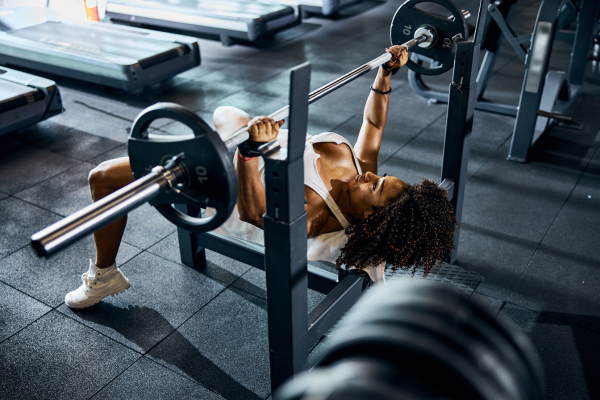
How to Do It: Plant your feet, arch your back slightly, and lower the bar to your chest, then press up explosively like you’re pushing the world away—because if you’re not controlling the weight, it’s controlling you.
Finally, if you want to challenge your body in a new way while supporting joint health, we recommend resistance band exercises.
Bands are easy on the joints and perfect for adding resistance without heavy weights.
Overhead Squat
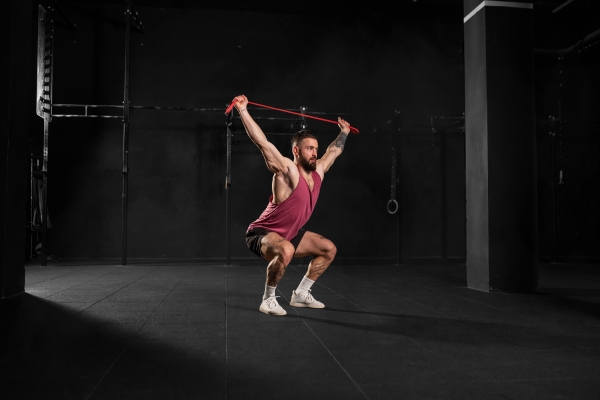
How to Do It: Stand on the band with feet shoulder-width apart, holding the handles overhead, then squat low while keeping your arms locked out and core braced, turning your body into a moving pillar of strength and stability.
Seated Rows
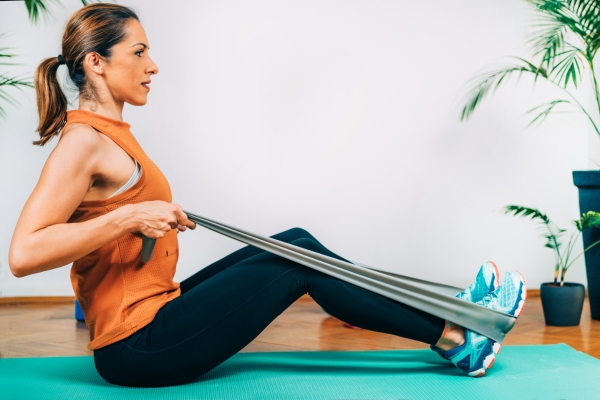
How to Do It: Sit tall with legs straight out and the band anchored around your feet, then pull the handles toward your waist, elbows tight, while squeezing your back like you’re cracking a walnut between your shoulder blades—because if you’re not engaging the muscle, you’re just wasting the movement.
Lunge to Curl

How to Do It: With one foot on the band and the opposite leg stepping back, lower into a lunge while curling the handles up, making your legs and arms work in perfect unison for a total body knockout.
Lateral Raises
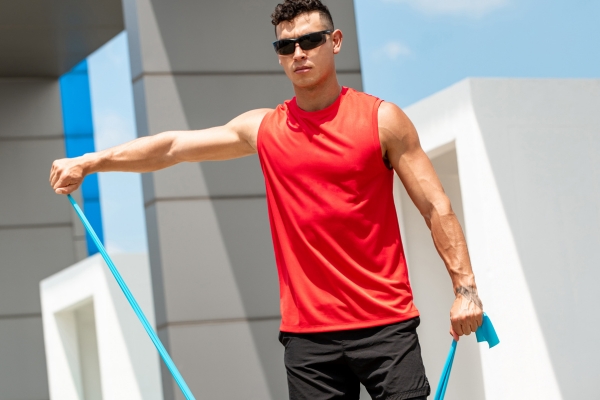
How to Do It: Stand on the band with feet shoulder-width apart, keep elbows slightly bent, and raise the handles out to the side until your arms are parallel to the floor, torching your delts without letting momentum steal the show.
Woodchopper
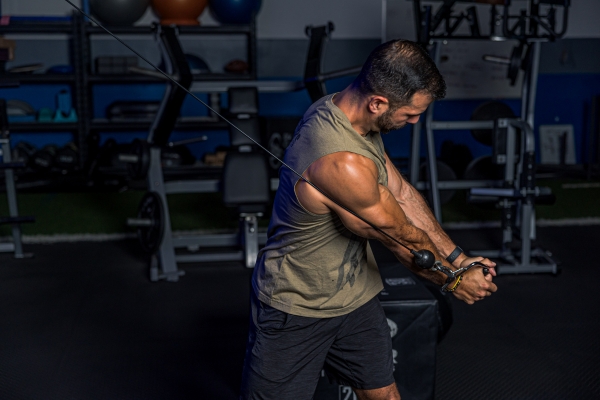
How to Do It: Anchor the band low, grip the handle with both hands, and rotate your torso upward and across, unleashing power from your core like you’re swinging through a tree—controlled, but explosive.
Incorporating strength training into your routine is not just about building muscle; it’s about staying active, reducing the risk of injury, and maintaining a high quality of life as you age. So, ditch the idea that cardio is the only option and start lifting—you’ll thank yourself in the years to come.
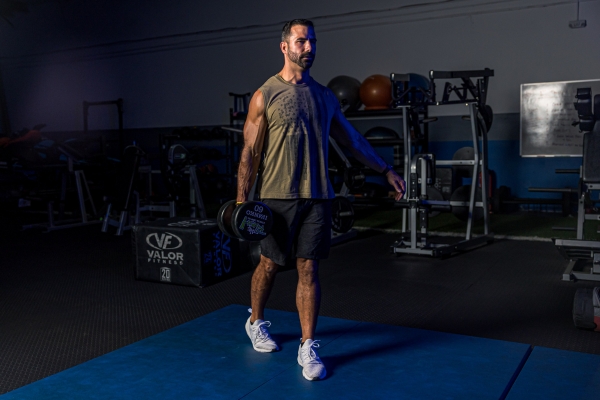
Prioritizing Trunk Rotation, Hips, and Core Work
If you want to stay strong and stable as you age, your hips, core, and trunk rotation need to be top priorities.
These areas are the powerhouse for most movements, whether it’s twisting, bending, or simply walking.
As we get older, tight hips and a weak core are often the culprits behind poor posture, reduced mobility, and even back pain.
Training these muscles isn’t just about aesthetics—it’s about maintaining functionality and preventing injuries.
Why Hips, Abs, and Trunk Rotation Matter for Daily Movement
Your hips and core are the foundation for nearly everything you do.
Strong hips keep your lower body aligned and your gait smooth.
A stable core allows you to transfer power between your upper and lower body efficiently.
Trunk rotation is crucial for activities like turning, reaching, and twisting, and neglecting it can limit your mobility.
When these areas are weak or tight, your body compensates in ways that can lead to chronic pain and stiffness.
Exercises to Target the Hips, Core, and Trunk
Here are some effective exercises that should be part of your routine:
Russian Twists
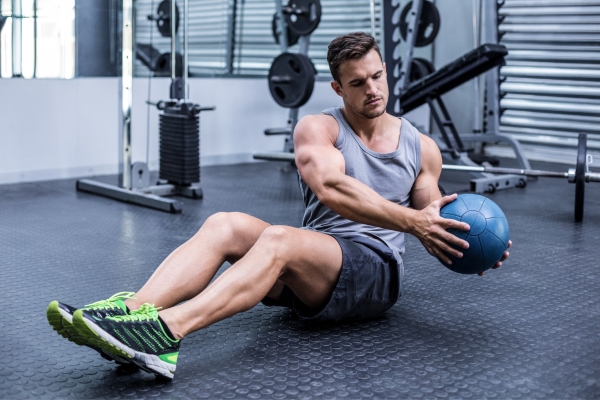
How to Do It: Sit with your feet off the ground, lean back slightly, and twist your torso side to side while holding a weight or resistance band to build rotational strength.
Hip Bridges
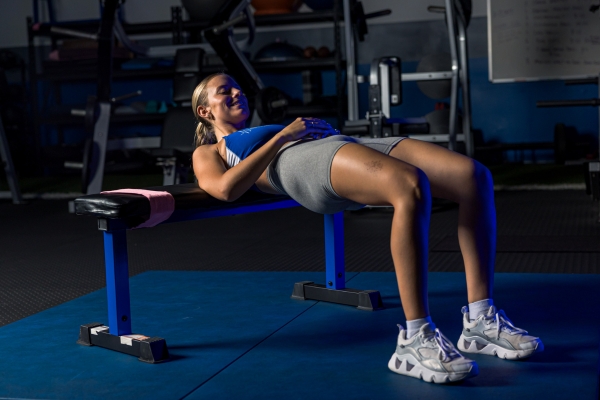
How to Do It: Lie flat with your knees bent and feet flat on the ground, then drive your hips upward by squeezing your glutes—this move strengthens both the hips and lower back.
Planks
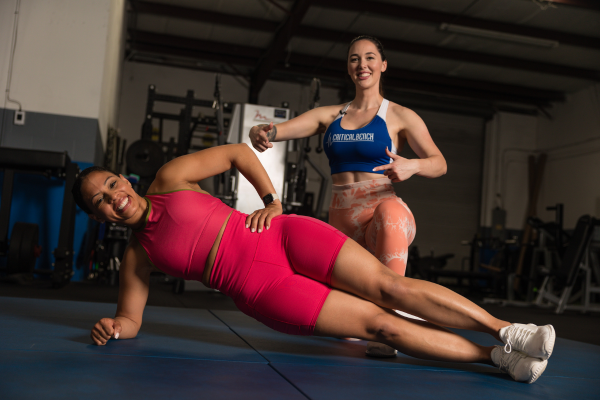
How to Do It: Hold a strong plank position with your body in a straight line from head to heels—focus on engaging your abs and glutes to build full-core stability.
The Importance of Core Strength for Reducing Back Pain and Improving Posture
A strong core does more than just give you a toned midsection—it’s your first line of defense against lower back pain and poor posture.
When your core muscles are weak, your spine lacks the support it needs, leading to slouching and discomfort.
By training your core regularly, you’re reinforcing the muscles that stabilize your spine and pelvis, helping you stand taller, move better, and keep pain at bay.
Investing time into exercises that target trunk rotation, hip mobility, and core strength is essential for maintaining daily function and living pain-free as you age.
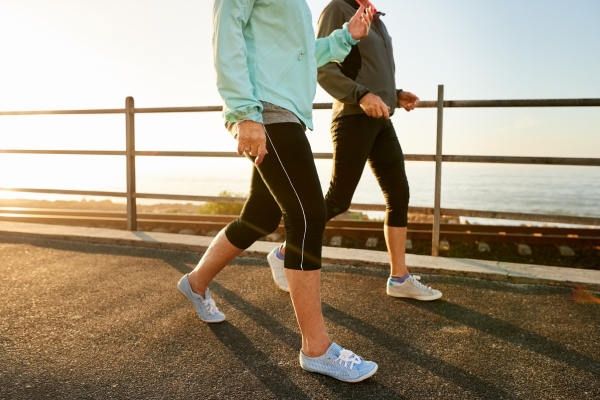
The Power of Walking: A Simple but Effective Daily Habit
Walking might seem too basic to be a real workout, but don’t underestimate its impact—especially for those over 40.
As we age, our bodies crave consistent, low-impact movement that supports joint health, maintains cardiovascular fitness, and keeps metabolism in check.
Walking checks all these boxes, making it one of the most effective and accessible forms of exercise you can do daily.
Why Walking is One of the Best Exercises for People Over 40
Unlike high-impact activities, walking is gentle on the joints while still delivering big benefits.
It’s a weight-bearing exercise that helps maintain bone density, which becomes increasingly important as you age.
Walking also keeps your muscles engaged, promotes flexibility, and encourages better posture—all without the risk of overtraining or injury.
Plus, it’s something you can do anywhere, anytime.
The Cardiovascular, Metabolic, and Mental Health Benefits of Walking
A daily walk is like a triple shot of health benefits.
Cardiovascularly, it keeps your heart strong by improving circulation and helping to manage blood pressure.
Metabolically, it boosts your calorie burn and helps regulate blood sugar levels.
But the benefits don’t stop there—walking is also a proven mood booster.
It reduces stress, sharpens focus, and provides a mental break that’s crucial for maintaining balance in a busy life.
Tips for Incorporating Walking into Your Daily Routine
Even on hectic days, fitting in a walk is easier than you might think. Here’s how:
Morning or Evening Routine: Start or end your day with a 20-30 minute walk—it’s a great way to set the tone for the day or wind down at night.
Lunchtime Walks: Use your lunch break to get some steps in. A quick walk not only gets you moving but also clears your mind, making you more productive in the afternoon.
Make it Social: Turn walks into a chance to catch up with friends or family. Walking together makes it a more enjoyable and consistent habit.
Take Active Breaks: Instead of scrolling through your phone during downtime, take a 5-10 minute walk around the block or office. Those short bursts add up.
Walking is the simplest yet most powerful habit you can adopt for long-term health. Whether you’re aiming to improve fitness, manage stress, or just stay active, making walking a daily priority is a small change with massive payoffs.
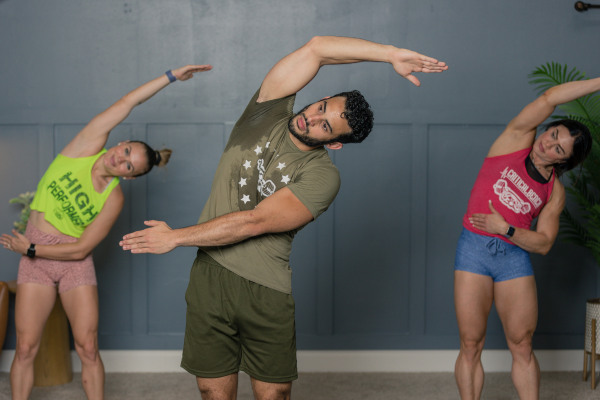
Movement is Medicine: The Importance of Frequency
When it comes to fitness after 40, the phrase “use it or lose it” has never been more accurate.
Staying active isn’t just about those intense workouts a few times a week; it’s about consistent, daily movement.
As we age, our bodies thrive on regular activity that keeps joints lubricated, muscles engaged, and circulation flowing.
The key isn’t how hard you work out but how often you move.
“Use It or Lose It”: Why Frequency Matters More Than Ever After 40
As you get older, inactivity can accelerate muscle loss, stiffness, and decreased mobility.
It’s not enough to crush a tough workout once in a while; your body needs regular movement to maintain strength, flexibility, and overall function.
By incorporating movement into your everyday life, you’re fighting off the decline that comes with age and staying ahead of the curve.
Why Frequent, Consistent Movement Beats Occasional High-Intensity Workouts
It’s tempting to think you can make up for a sedentary week with one grueling session in the gym, but that approach is a recipe for injury and burnout.
What really keeps you healthy and fit is moving consistently throughout the day.
Frequent, moderate activity like walking, stretching, and light strength training provides lasting benefits without overloading your body.
Regular movement keeps your energy levels up, your metabolism active, and your joints supple, while reducing the risk of injury.
Strategies for Building Daily Movement Habits
Integrating movement into your daily routine doesn’t have to be complicated. Here are a few simple ways to stay active throughout the day:
Micro Workouts: Break your exercise into smaller chunks. Do a few bodyweight exercises or resistance band moves for 5-10 minutes multiple times a day.
Active Breaks: Set a timer to stand, stretch, or walk for a few minutes every hour. These small breaks add up and keep your muscles from stiffening.
Stretching Routines: Begin and end your day with a 5-minute stretching routine. This maintains flexibility and helps you ease into and out of your day with less stiffness.
Incorporate Movement into Daily Tasks: Take the stairs instead of the elevator, park farther away, or do a few squats while waiting for your coffee to brew. Little movements throughout the day can make a big difference.
Staying active doesn’t have to mean spending hours at the gym. The real secret to aging well is keeping your body in motion as often as possible.
Movement is medicine, and the more you incorporate it into your daily life, the better your body will respond—no matter your age.

Staying Consistent and Enjoying the Journey
Fitness over 40 isn’t just a goal—it’s a lifestyle. It’s about showing up consistently and letting the process work for you.
Forget quick fixes and focus on steady progress.
The journey is about getting stronger, moving better, and staying healthy long-term.
Set Realistic Goals and Track Wins
Stay motivated by setting achievable goals.
Whether it’s hitting a new PR, improving mobility, or staying consistent with your routine, track your wins and adjust as you go.
Progress isn’t about being perfect—it’s about staying on the right path.
Make Fitness Fun and Empowering
Fitness in your 40s can be more rewarding than ever.
Find what you love—strength training, walking, yoga—and make it a part of your routine.
The physical benefits are just the start; staying active boosts confidence and gives you the energy to own your day.
Embrace fitness as a lifelong journey, stay consistent, and keep pushing forward.
The best version of you is still ahead—stay committed and enjoy the ride.

